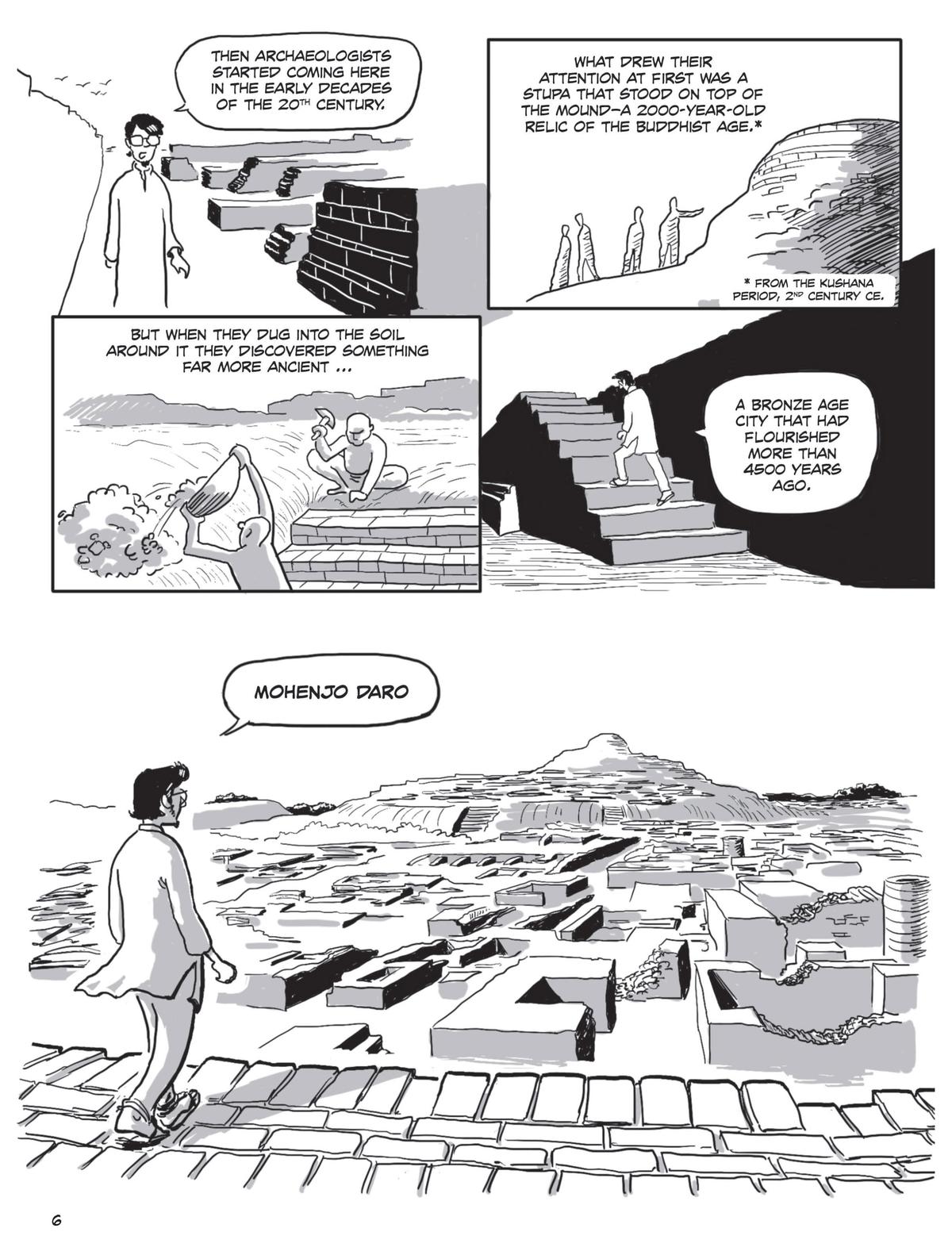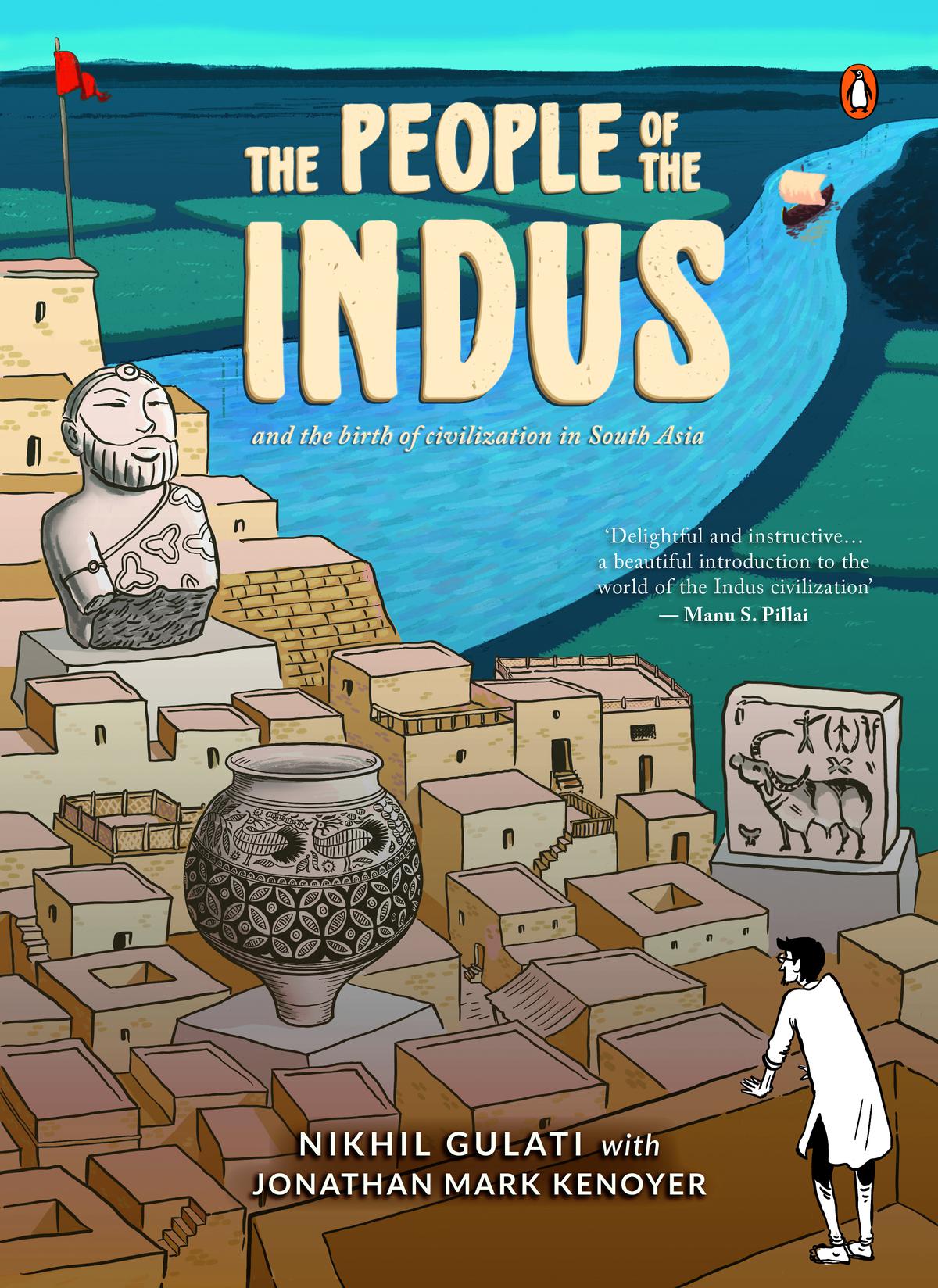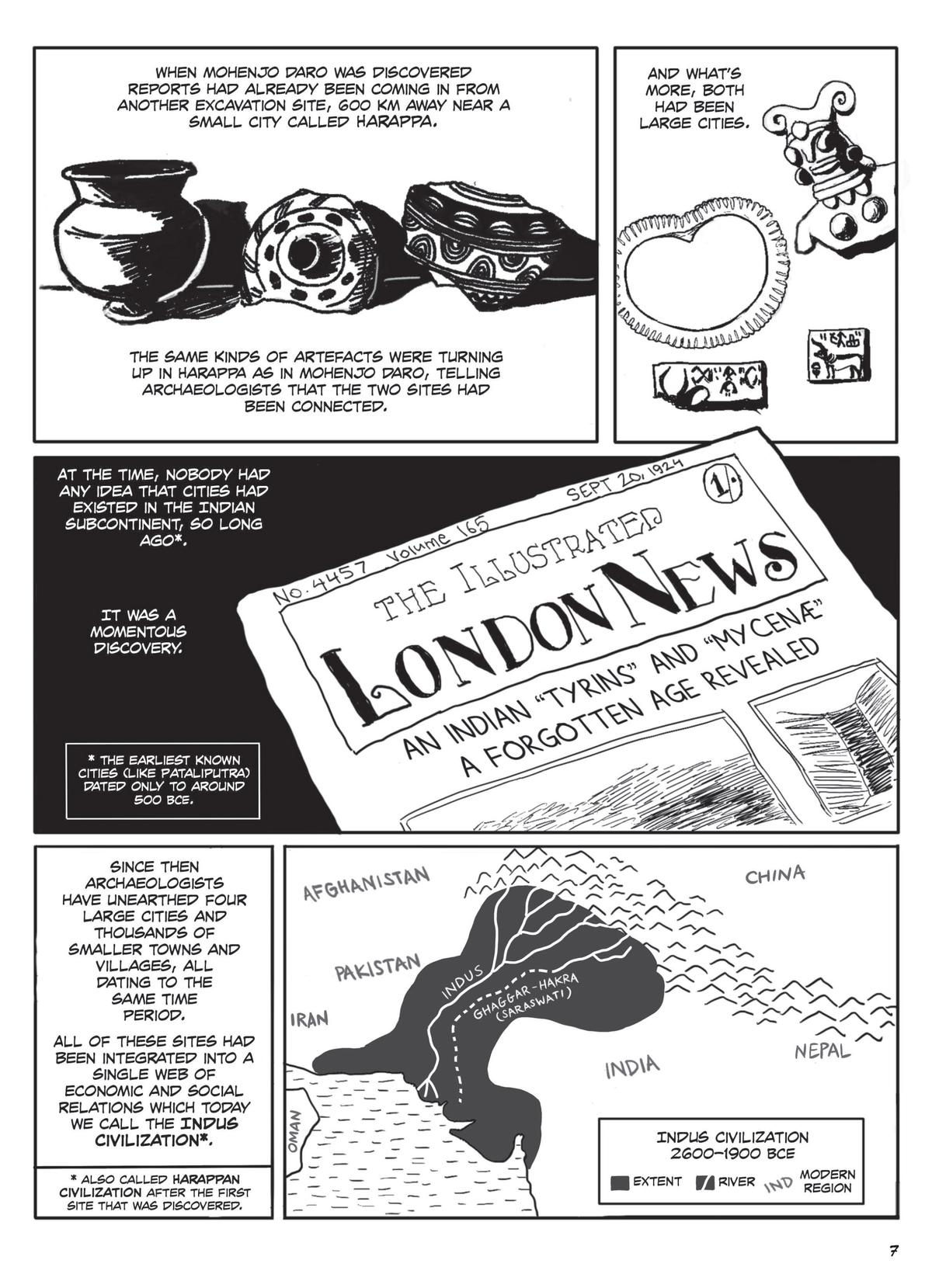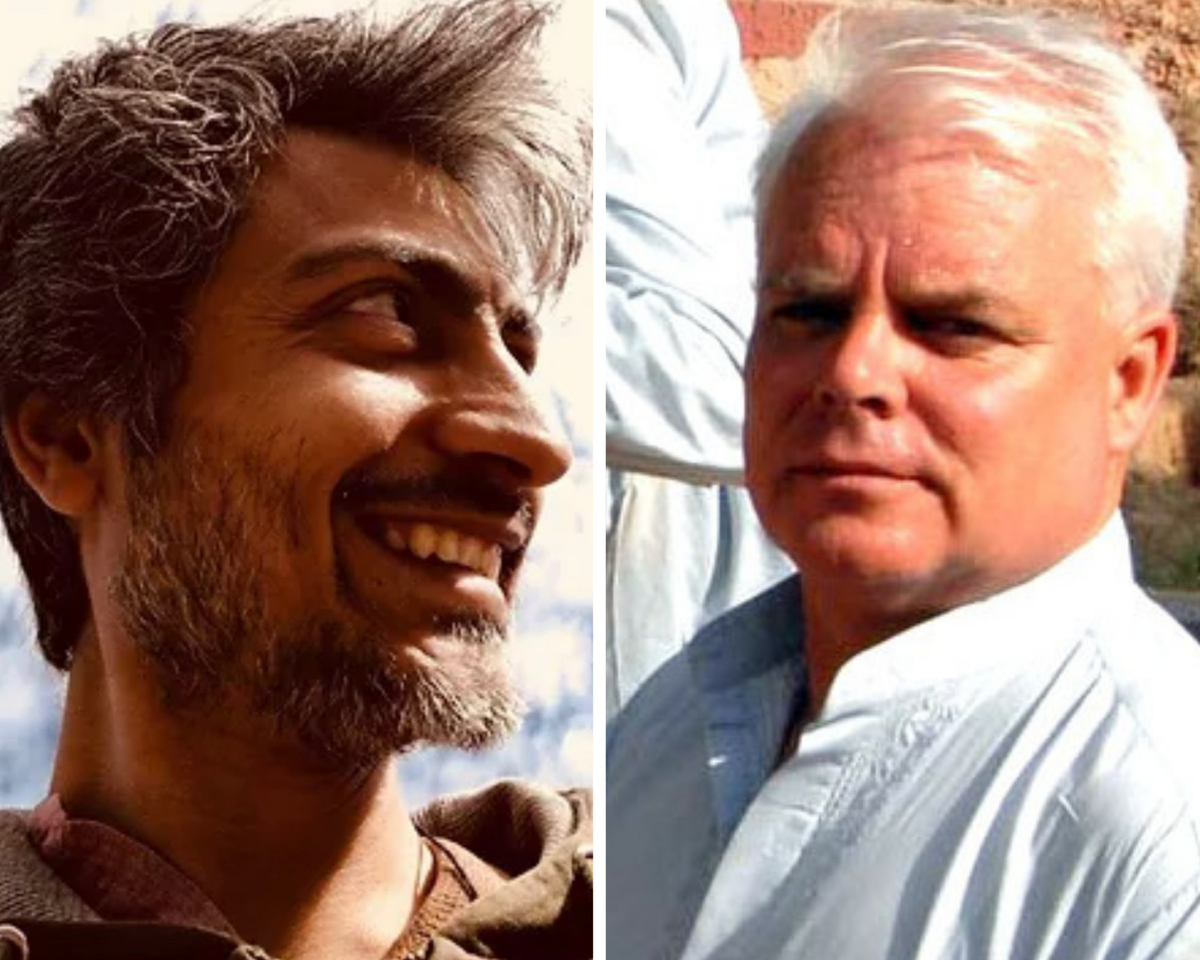“History is a way of telling a story, just like myth, fiction, or oral storytelling.” The words of speculative fiction writer Ursula K. Le Guin caution readers as they begin Nikhil Gulati and Jonathan Mark Kenoyer’s journey through the Indus Valley. Recently released graphic novel from Penguin Random House people of indus – which follows a family that migrates to Mohenjodaro, a booming settlement, around 3200 BC in search of a brighter future – is a 192-page illustrated glimpse into an ancient civilization, a heart-warming fantasy tale Combines academic interpretations with
The book’s intentions are educational, but not in the way mainstream Indian audiences are used to. Facts are not stated, they are suggested. Theories are offered, discussed and even refuted. Academic discoveries are not presented as a finish line; They are the starting point for investigating the secret places of human history. For readers who expect the didacticism of a traditional school textbook, Le Guin’s inscription is a redirection: “History is not a science, it is an art.”

Nikhil Gulati’s graphic novel pages, people of indus
Why not pyramids?
Gulati’s own journey began in Gujarat’s Lothal, a site from the Indus Valley Civilisation, which the author and painter visited in 2013 when he was an MBA student at IIM-Ahmedabad. “I thought to myself, the The Indus Valley was one of the three great ancient civilizationsSo it should be hugely impressive,” he recalls, “but at first glance, I remember being very, very disappointed.”
The site is an expanse of grass and dirt, interspersed with the remains of brick structures that give no apparent sense of significance. As Gulati and his friends wandered through the overwhelming landscape, a caretaker asked them to “stay on the path”. “I kept thinking, ‘I don’t see any way!’,” laughs Gulati, “just bricks and dirt.” Then, the caretaker pointed to the dockyard and the sight of the 13-foot-deep, brick-lined pool struck a nerve. “They told me it was only a tenth of the site, with the rest still buried underground. It was clear that much more was happening here than you might think at first glance.
Gulati was particularly struck by the notion that a great ancient civilization—concurrent with Mesopotamia and the Pharaoh’s Egypt—had not left behind any impressive monuments. “Why isn’t it as visually stunning as it’s supposed to be?” He remembers thinking, “That was the question that got me deep into this subject, and the more I dug into it, the more fascinating things I found.” Like the fact that the lack of monuments was symbolic of a decentralized political structure with no king.
A Graphic Take on History
Developments in research and academia have inadvertently remained industry secrets for a long time, mostly because general audiences do not have access to or the ability to read dense, jargon-heavy reports. “The excavation report is 800 pages long, and very dry,” he laughs.

people of indus

A page from Nikhil Gulati’s graphic novel, people of indus
But Gulati soon realized that the magic of the historical method lay not in the individual objects discovered, but in how these discoveries could be linked together across time and geographies. “Once you started connecting the dots, let’s see what was happening [archaeological sites] Lothal and Dholavira and Chanhudaro, some really good stuff starts coming out, which I think nobody has really sat down and written about the popular medium.
Upon completing his MBA, Gulati moved to Hyderabad, where he was inspired to create Shepherd’s Hill: The Rise and Fall of Golconda (2015), detailing the history of Golconda Fort. Around the same time, he was approached by a doctoral student in archaeology, who was excavating the Indus Valley site Rakhigarhi in Haryana, about potentially creating some educational comics on the subject. “I told him I was thinking of doing the exact same thing,” he says. “He was really helpful in finding excavation reports and journal articles that were hard to find.”
The book took five years to make, and Gulati says that the graphic novel format allowed him to convey historical details in a way that written language could not. “I’ve always felt that history should be visual. Mohenjodaro is one of the only ancient cities where walking through the ruins makes you feel like you’re in the same place. I don’t just want to read about it – I want to see what it was like. Show me what it would have looked like 5,000 years ago if I was standing on the roof.” As a painter, he was careful to avoid over-stylization or personal flourish, in order to render ancient sites and artefacts as authentically as possible.
Towards the end of the project, Gulati contacted Professor Jonathan Mark Kenoyer, one of the leading Indus Valley authorities and professor of archeology at the University of Wisconsin–Madison. Kenoyer became an academic who furthered Gulati’s artistry, helping him craft a narrative that stayed true to the facts.

Nikhil Gulati and Jonathan Mark Kenoyer
a comic twist
Next, Gulati is turning his gaze to a slightly different area. While he doesn’t anticipate doing non-fiction work for a long time in the near future, history remains a huge inspiration for him as a creator. “I love the comics scene right now,” he says, “It’s going to sound hyperbolic, but it almost feels like a renaissance.”
In fact, the medium has produced a new generation of daring creators who are defying narrative conventions to explore entirely new artistic styles and stories. events like the artist-run Indie Comics Fest and publications like Comix Quarterly comics, offer emerging creators a venue to showcase experimental and socially relevant work in a way that mainstream media does not. For this Gulati is hopeful. “In 50 years, we’ll look back on this time, and see that this is where it all began.”
Freelance writer and playwright based in Mumbai.